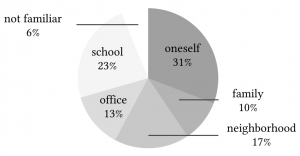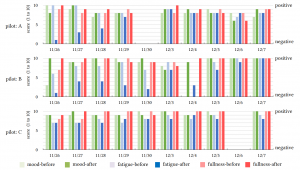Changing Society: How Robots Can Encourage Inclusivity
Written By: Anisha Kolambe
As the world continues to advance itself, technology becomes even more ingrained into the lifestyles of everyday people. Robots are no exception, especially considering their vast influence in working environments within a short time frame. Usually when robots are thought about in the context of the labor market, they are associated with causing unpredictability (V. Briciu and A. Briciu, 2020, p.1), creating conclusions about their potential in eliminating careers and excluding communities from having access to equitable resources. However, the impact of robots and artificial intelligence is largely dependent on the method of its implementation. Rather than employing robots as a replacement for human workers, another unique approach being explored is a robot’s ability to assist its human counterpart. Teleoperation consists of remotely controlling a robot to perform tasks, enabling the possibility of ‘avatar work’ that allows for an individual to express themself by using the robot as a representation of their own personality and interests. Through the adoption of AI to create unique tracking systems for individuals to operate the robot, people with limited movement due to age, congenital conditions, or other factors can still make valuable contributions to society.
Integration
Ory Laboratories is a robotics startup company located in Japan that aims to reduce the negative emotions resulting from social isolation. Opening up a two week avatar cafe called “Cafe Dawn”, the company evaluated the performance of its robots OriHime and OriHime-D in communicating with customers and creating a comfortable ambience. Working as waiters, the individuals operating these robots had conditions such as ALS, AVM, SMA, spinal/cervical cord injuries, and other disorders that largely constrained their overall movement (Takeuchi et al., 2020, p. 4). Due to their unique physical capabilities, individuals had a vast range of methods to input responses for the application controlling their respective avatars, including mouse (hands), mouse (jaw), and a gaze input device that was utilized for the analog keyboard of the communication software called OriHime eye. ALS operators also used the speech synthesis function to talk with customers.
In order to measure the influence of avatar work on the mental state of both waiters and customers, several questionnaires were administered to both groups throughout the duration of the experimental study. Figure 1 displays the data collected of the prior acquaintance 700 diners had with the disabled population, allowing for multiple responses (Takeuchi et al., 2020, p. 4). Only 6 percent of people had no experience at all, showing the widespread potential of telepresence in everyday life. A second survey was conducted to record how operators of OriHime-D were impacted by the change in lifestyle in terms of mood, fatigue, and mental fulfillness (Figure 2). The work completed usually also sparked an increase in mood and fullness values, while maintaining or decreasing the same value of fatigue. OriHime robots were successful in the integration of a population that would otherwise be excluded from the daily workings of society due to factors outside of their control. Furthermore, the customer response to the concept of the cafe was enthusiastic and supportive in nature. The work that teleoperators completed was thus both rewarding to self and useful in its overall benefits to society.
Figure 1

Statistics showing the familiarity customers had with people with disabilities within their community.
Source: OryLab
Figure 2

Responses from operators about their feelings before and after their working schedules.
Source: OryLab
Effects
OriHime robots allow access to a previously untapped workforce, advancing equity by providing fairer access to resources and opportunities. Yuki Aki, the COO and cofounder of Ory Laboratories explains, “One man using it said he was able to earn money for the first time in his life, and decided to buy clothes for his mother, who cares for him because he cannot work” (Brandvoice, 2020). Avatar robots are also being deployed outside of the cafe setting, partly encouraged by implications in the physically distanced setting of COVID-19. Employees now have the option to attend office conferences as an avatar while students can use OriHime in physical classes if confined to a virtual setting. OriHime robots have also been greeting visitors at hotels and other reception areas to decrease risks of exposure.
Additionally, OriHime and other avatar robots show possible potential in influencing a redefined lifestyle even beyond COVID-19. Not only do the robots encourage collaboration, they also allow for greater flexibility and self-reliance. Robots can be utilized within nursing homes or with the elderly to provide independent care and promote a safer environment. Difficulties in commute or the rise of unexpected circumstances would no longer hinder ability to participate in the office working environment and the robots would make it possible to meet with clients and businesses from other locations without the need for travel. Overall, OriHime provides a versatile style of communication that accounts for multiple perspectives and abilities without discrimination, advancing humanity’s ideals and progress in creating an open and equitable society.
Conclusion
In finding a solution to loneliness and solitude, OriHime concurrently tackles deep rooted issues within the modern world that may inherently contribute to forms of unconscious prejudice within societal structure. By creating new methods of communication across multiple communities and minorities, avatar robots account for an expanded range in which individuals can collaborate and contribute on a larger scale to advance opportunities and resources for everyone, regardless of background or physical characteristics. OriHime and other similar projects pave the way for a future in which humans and robots can unite in advancing the entirety of our world’s condition.
References and Sources
Brandvoice, J. (2020, November 30). Japan brandvoice: Japan is using robots as a service to fight coronavirus and for better quality of life. Forbes. Retrieved October 14, 2021, from https://www.forbes.com/sites/japan/2020/11/17/japan-is-using-robots-as-a-service-to-fight-coronavirus-and-for-better-quality-of-life/?sh=4cf82d815b4e.
Briciu, V. A., & Briciu, A. (2020). Covid-19 influence and future perspectives of artificial intelligence on the labour market. BRAIN. Broad Research in Artificial Intelligence and Neuroscience, 11(2sup1), 21–28. https://doi.org/10.18662/brain/11.2sup1/90
English: Orylab(オリィ研究所)テクノロジーの力で「不可能を可能に変えていく」. OryLab Inc. (2021, October 13). Retrieved October 14, 2021, from https://orylab.com/en/.
Orihime eye+switch – Orihime 分身ロボット. OriHime eye+Switch(オリヒメアイ プラス スイッチ). (n.d.). Retrieved October 14, 2021, from https://orihime-orylab-com.translate.goog/eye/?_x_tr_sl=ja&_x_tr_tl=en&_x_tr_hl=en&_x_tr_pto=nui%2Csc.
Takeuchi, K., Yamazaki, Y., & Yoshifuji, K. (2020). Avatar work. Companion of the 2020 ACM/IEEE International Conference on Human-Robot Interaction. https://doi.org/10.1145/3371382.3380737